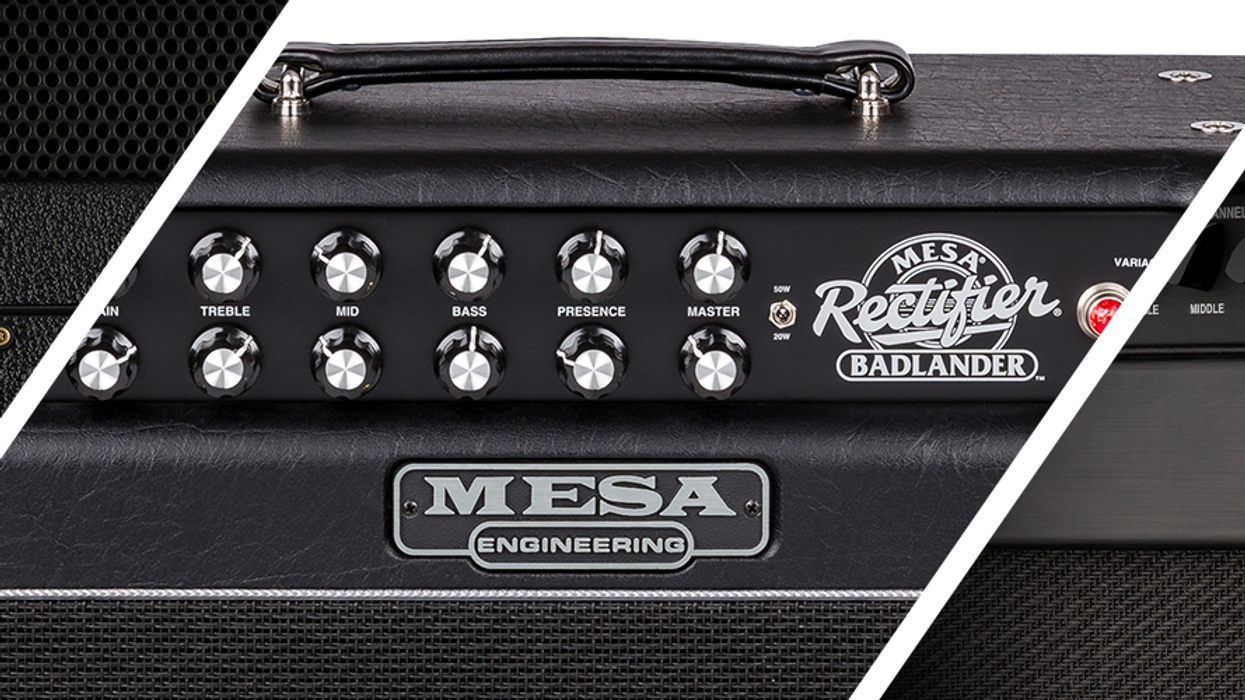Phasers, flangers, and wah-wahs are all great tools for adding funky, swirling, and vowel-ish accents to your playing. But few of these effects does the job quite as musically as the envelope filter. The difference is the way in which an envelope—when set correctly—will interact dynamically with the guitarist’s hands. Carl Martin’s new envelope filter works brilliantly on this account. It’s also a great pedal for players who like wah textures but that don’t want to bother with a wah on the pedalboard all the time.
When You Believe In Things You Don’t Understand…
Let’s get down the important questions. What do optics have to with a guitar pedal? Well, you wouldn’t be the first to ask. Your guitar’s sound wave can be broken down into seven parts—amplitude, wavelength, time, attack, decay, sustain, and release. These last four criteria make up a wave’s envelope. And once a sound has been transcribed into an analog pulse you can manipulate the wave envelope with an analog optical circuit.
How does this work? It’s simple; there is a light and photovoltaic collector housed together in a light shielded container. When the guitar is played, the light flashes and the collector translates the flash back into electronic signal. When circuitry is added or depending on how hard the player digs into the guitar or whether a booster is added before the envelope, the envelope attack (how quickly the light gets bright), sustain (how long the light stays fully lit), decay (how quickly the light dims) and release (how long the light stays on) of the audio signal is affected. Add this control parameter to a filter and you get an optical envelope filter. What sets this style of circuit apart from a wah, which is a mechanical filter dependent on foot sweeps, is that it is electronic. This circuit type also differs from phasers in that it does not rely on an LFO to control the sweeps. It’s all in how you set the parameters and play. In the case of the Carl Martin Optical Envelope two optical circuits are involved with controlling the envelope.
Mission Control
Built into a sturdy powder-coated aluminum case, the Carl Martin Optical Envelope has a Hi Pass Tone control separate of the filters, drive knob (threshold control), Q knob (bandwidth), Level knob (make up gain), a foot switchable High Pass, Band Pass and Low Pass filter control and buffered bypass (rather than true bypass) footswitch. There are three indicator lights for the bypasses located above the filter switch and a red on/off indicator switch located at the top of the pedal. Besides the in/out jacks there is a Boss-style power adaptor located at the top of the pedal. In the event that external power is not available, the pedal can run off of a single 9v battery.
Once Around The Block
Taking the CM Optical Envelope Filter for a spin with a Teisco ET-312 guitar and Vox AC4TV amplifier, I was able to conjure sounds from percussive to positively nostalgic. The real trick with the pedal is figuring out not just the right combination of Drive and Q for the corresponding filter type, but getting the right pickup selected as well because the pickup frequency and output seriously change how the circuit works. The other trick is getting used to highly interactive way that the Tone knob works with the Drive knob.
Ratings
Pros:
Great Value.
Cons:
An envelope kill switch would be a great addition.
Tones:
Ease of Use:
Build:
Value:
Street:
$135
Carl Martin
carlmartin.com
Once the knob settings are sorted it’s pretty easy to dial in some very usable and fun tones. You can go from thick and funky vowel-shaped sounds to thin and attack-heavy scratch that would have Shaft strutting in rhythm. It’s really slick that you can switch the filter type with your foot because it reduces the amount of time spent twiddling knobs. One nice addition would be an envelope kill switch so that the pedal could be foot-switched purely to a filter pedal. Though it’s likely that would add significantly to the manufacturing expense and eliminate some of the considerable value of the Carl Martin.
But with the tools at hand you can easily explore the funky textures of Stevie Wonder or John Frusciante, the subtle, sentimental textures of Badly Drawn Boy or the psychedelic expressiveness of Jerry Garcia on “Estimated Prophet.” And there is a lot of room to explore in this pedal whether you are a funky astronaut or memory sick songwriter.
The Verdict
Given the low price, solid build, and smooth, versatile sounds, anyone on a budget that’s looking for the distinctive sounds of an envelope filter will want to have a look at this pedal. Ditching the filter select footswitch in favor of an envelope kill switch would make the pedal a double threat. But that omission aside, it’s super intuitive and fun. The Optical Envelope will certainly brings the funk. And while it may not achieve the musicality of a vintage Mutron III, you’ll be thankful to not have to pay the vintage price.







![Rig Rundown: Russian Circles’ Mike Sullivan [2025]](https://www.premierguitar.com/media-library/youtube.jpg?id=62303631&width=1245&height=700&quality=70&coordinates=0%2C0%2C0%2C0)

















